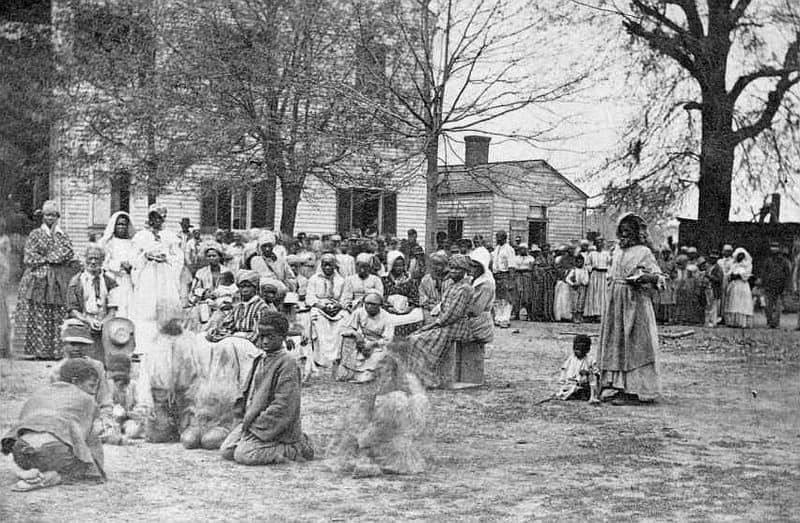Between 1808, when the United States abolished the transatlantic slave trade, and 1865, when it abolished slavery, enslaved peoples toiled on the plantations of Virginia. Those were not their only sites of labor, however. Enslaved people worked in factories, in fisheries, in tobacco processing facilities, and as transporters of produce. The image of slaves working in the tobacco or cotton fields of Virginia is somewhat misleading. Many thousands did, of course. But thousands of others were taught skills such as barrel making, tanning of hides, candle and soap making, carpentry, cobbing shoes, meat and fish preservation and packing and many others. The large plantations of Virginia were self-sufficient in many ways, producing everything needed for sustenance.

Many smaller farms could not sustain the slaves needed to work their fields year around. Such farms often rented slaves from larger plantations for the busy times of planting and harvest. Their services were paid for with both money and crops, depending on the arrangement between the parties. Daily life for Virginia’s slaves was thus varied, depending on circumstances and seasons. It was also dependent, in large part, on the whims of their owners. Until 1831, many of the enslaved peoples on Virginia plantations were taught to read and write, the Bible serving as their source of knowledge. After the state legislature outlawed the practice, many planters continued to educate their slaves, including Thomas Jackson, who later entered history as Stonewall Jackson. Here is a look at the daily lives of enslaved people in Virginia from the early to the mid-19th century.

1. The plantation slaves became vital to Virginia’s economy
Antebellum Virginia’s society defined itself based on wealth and family prominence. Such was the case as far back as the later colonial period. Wealth was based on property, real property such as land and chattel property, based on slaves. For the wealthiest Virginians, the number of slaves they owned reflected a significant portion of their net worth. The largest landowners of the Tidewater and along the Blue Ridge were often cash poor. They turned to their enslaved people to generate income, though not always through sale. Slaves were often assigned to work in other capacities. Some worked in tobacco warehouses, others in loading ships along the quays on the James and Rappahannock Rivers. When railroads first began to appear, slaves prepared the roadbeds and laid the tracks. Construction of the new Capital City also provided income opportunities to Virginia planters.
Slaves were hired out as both skilled and unskilled laborers, their wages paid to their owners. In some cases, the owners allowed them to retain a portion of their wages, but others claimed the fruits of their enslaved people’s labor in their entirety. Slaves worked in Richmond’s emerging tobacco and iron industries, including the Tredegar Iron Works which became the largest in the South during the antebellum period. Relatively few urban merchants and businessmen owned slaves beyond those retained for house servants. They simply lacked the means to house them. Instead, they hired those from nearby plantations. Many of the enslaved people returned to their plantations at night, becoming some of the earliest commuters in American history. They had to carry passes to allay the suspicions of slave patrols watching for runaways as they traveled to and from their places of work.

